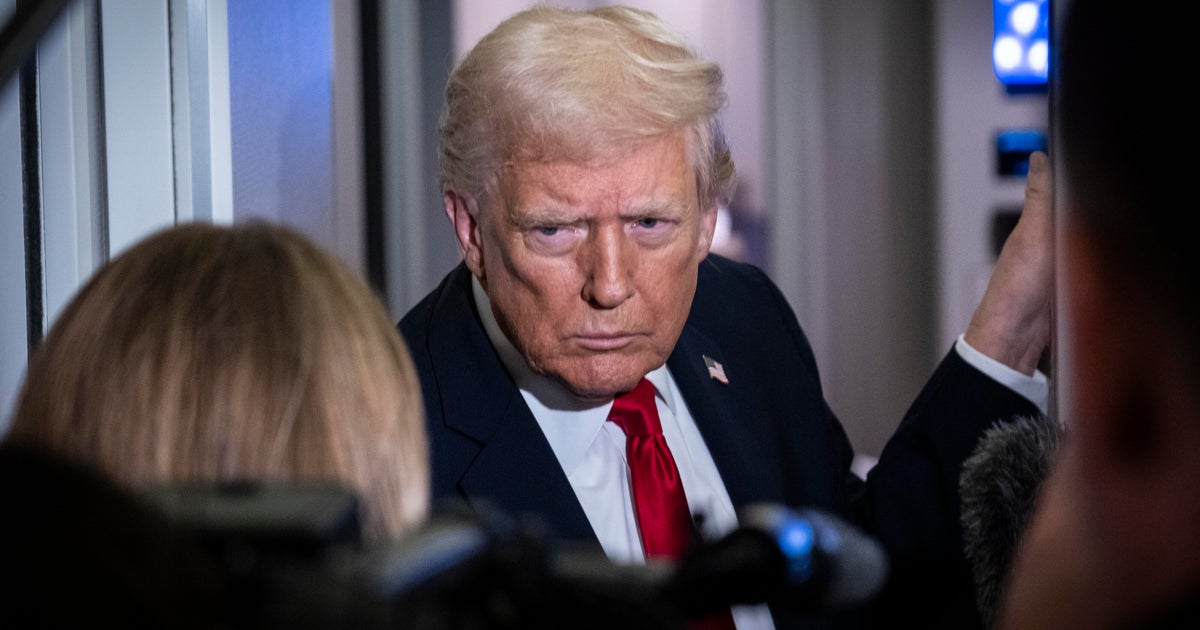Washington — President Trump on Wednesday assailed a female New York Times reporter who co-authored an article on his age and physical stamina in his second term, calling her “third rate” and “ugly, both inside and out.”
The president’s insults leveled at White House correspondent Katie Rogers are just the latest in recent weeks that have been aimed at female reporters covering his presidency. While speaking to members of the press on Air Force One earlier this month, the president snapped at Bloomberg White House correspondent Catherine Lucey, telling her “Quiet. Quiet, piggy.”
Lucey was asking the president about releasing the files from the Justice Department’s investigation into convicted sex offender Jeffrey Epstein.
Asked about the comment, White House press secretary Karoline Leavitt said Mr. Trump is “very frank and honest” with reporters and contrasted the president’s willingness to take questions from the press to his predecessor, former President Joe Biden.
“I think the president being frank and open and honest to your faces rather than hiding behind your backs, is, frankly, a lot more respectful than what you saw in the last administration, where you had a president who lied to your face and then didn’t speak to you for weeks and hid upstairs and didn’t take your questions,” she said. “So I think everyone in this room should appreciate the frankness and the openness that you get from President Trump on a near daily basis.”
A Bloomberg spokesperson told the Washington Post, “our White House journalists perform a vital public service, asking questions without fear or favor. We remain focused on reporting issues of public interest fairly and accurately.”
Then last week, while hosting Saudi Crown Prince Mohammed bin Salman in the Oval Office last week, Mr. Trump berated ABC News chief White House correspondent Mary Bruce when she asked about the 2018 murder of Washington Post columnist Jamal Khashoggi. An intelligence report released by the Biden administration concluded that bin Salman ordered the attack on Khashoggi.
Mr. Trump accused Bruce of embarrassing the crown prince with her question and later called her a “terrible person and a terrible reporter.” The president said her question was “horrible” and “insubordinate.”
The latest insult was provoked by a New York Times article published Tuesday that examined the frequency of the president’s public events and domestic travel, as well as the timing of his appearances on his public schedule. At 79, Mr. Trump is the oldest person elected to serve as president.
Signs of bruising on his right hand as well as swollen ankles have prompted new questions about Mr. Trump’s health. The president also revealed to reporters last month that he underwent an MRI during a physical at Walter Reed National Military Medical Center in April.
Rogers’ byline on the piece about Mr. Trump’s aging in office is listed alongside another reporter, Dylan Freedman, a machine-learning engineer and journalist at the New York Times.
The president attacked the Times and Rogers over the article, which he claimed was a “hit piece.” He called the newspaper a “cheap ‘rag'” that is “truly an ‘enemy of the people.'”
“The writer of the story, Katie Rogers, who is assigned to write only bad things about me, is a third rate reporter who is ugly, both inside and out,” Mr. Trump wrote on Truth Social. He did not mention the story’s co-author.
The New York Times defended the article and Rogers.
“The Times’ reporting is accurate and built on first hand reporting of the facts. Name-calling and personal insults don’t change that, nor will our journalists hesitate to cover this administration in the face of intimidation tactics like this,” a spokesperson said in a statement. “Expert and thorough reporters like Katie Rogers exemplify how an independent and free press helps the American people better understand their government and its leaders.”
The Society of Professional Journalists condemned Mr. Trump’s attacks on Bruce and Lucey last week, which it said were not isolated and instead “part of an unmistakable pattern of hostility — often directed at women — that undermines the essential role of a free and independent press.”
“Journalists are not props at a photo op — they are watchdogs for the public,” Caroline Hendrie, executive director of the group, said in a statement. “When reporters ask hard questions about the murder of a fellow journalist, that is not an embarrassment. What’s embarrassing is a leader trying to silence those questions.”
More from CBS News

